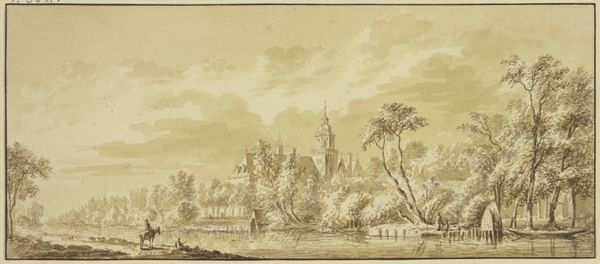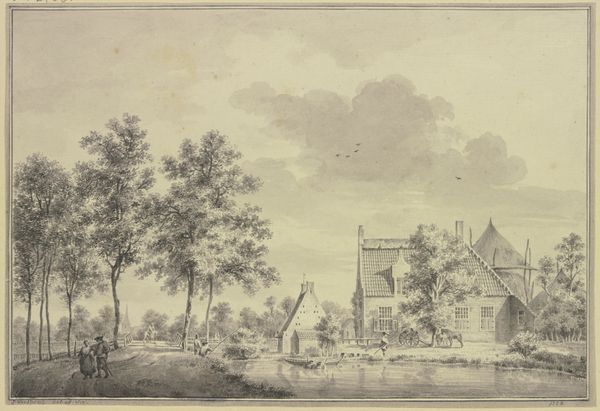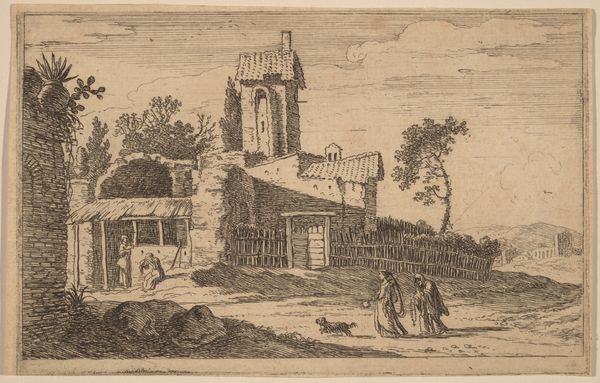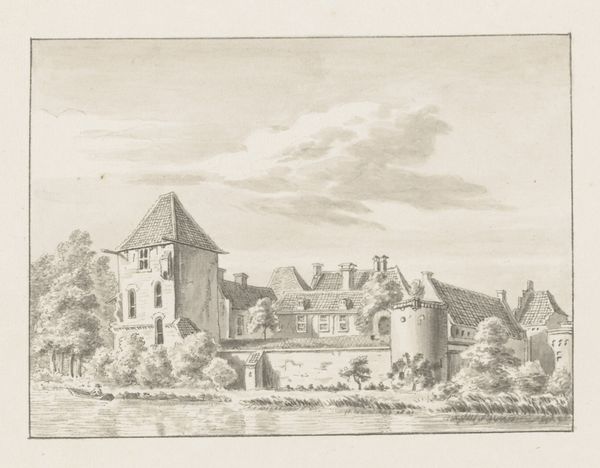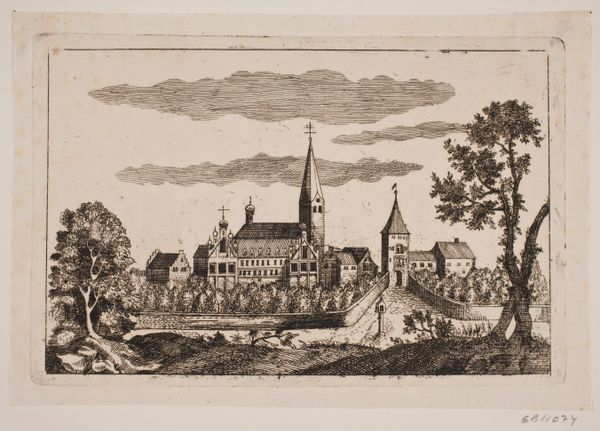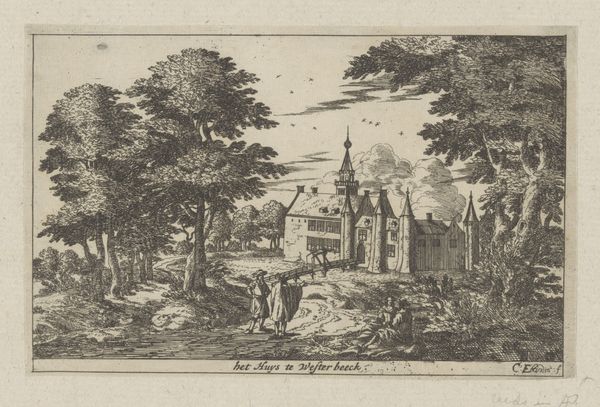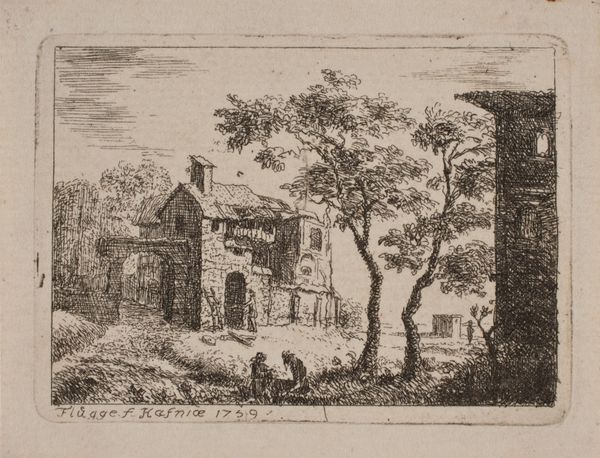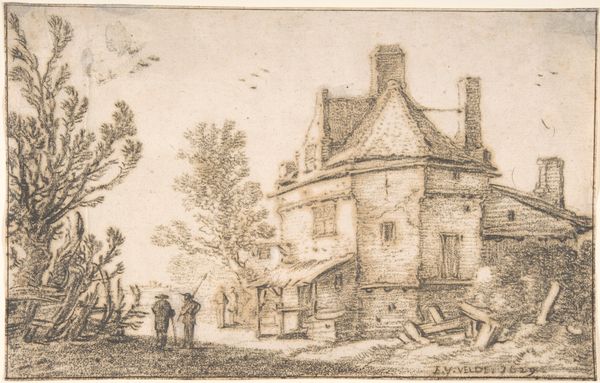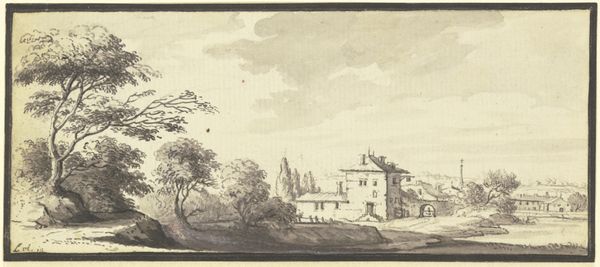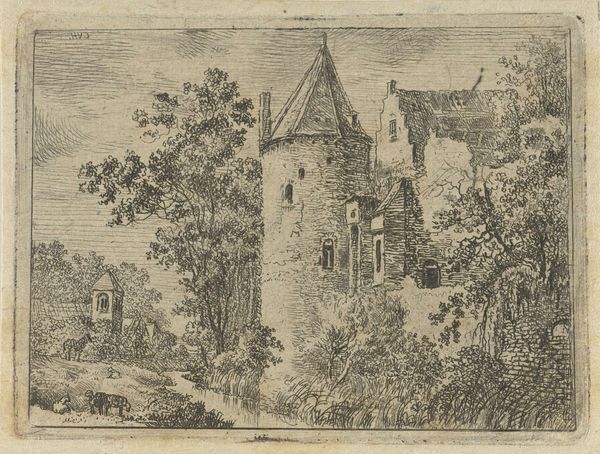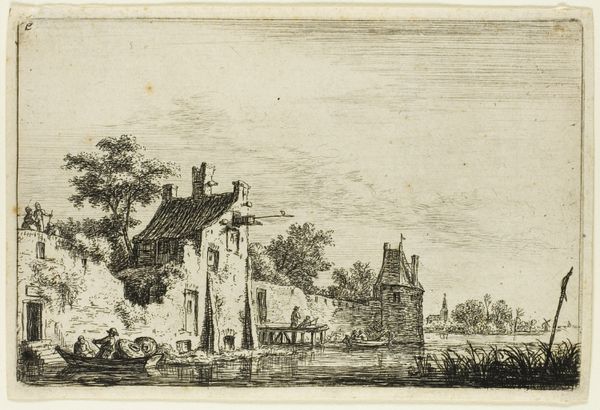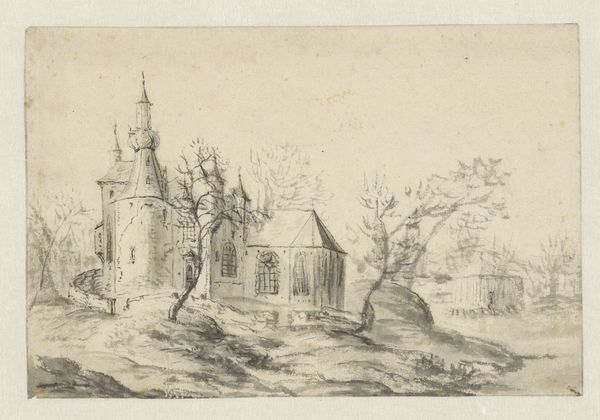
drawing, ink, pencil, architecture
#
drawing
#
baroque
#
landscape
#
ink
#
pencil
#
architecture
Copyright: Public Domain
Curator: Looking at this drawing, it’s Abraham Rademaker’s "City gate with portcullis," currently housed in the Städel Museum. It's rendered in ink and pencil. A quiet, evocative scene, don't you think? Editor: Evocative, certainly, but the sepia tones give it a rather melancholy feel. It’s less about celebration and more about memory, wouldn't you agree? I am struck by the strong compositional arrangement; the gatehouse in the center acts almost as a fulcrum, dividing the scene in a way, guiding the eye back toward the larger structure, deeper into the drawing. Curator: Yes, the monochromatic palette undeniably casts a nostalgic light. These kinds of architectural renderings by Rademaker are like ghost prints; you can see many abandoned or repurposed architectural structures. It reminds us that the only permanent condition is that of impermanence. That the very ground of what appears to be fixed, firm, permanent buildings and structures, always shifts, breaks, is remade. What does that say about our attempts to erect seemingly immovable structures, both mental and architectural? Editor: Very poetic. I tend to think of those themes playing out in terms of the relationship between line and shadow here, too. There's a clear interest in architectural detail in the lines used to define the gate and larger building. See how the architecture and its openings repeat motifs found throughout the surrounding nature--an analogy between nature and architectural forms, like mimicry? Curator: I see it similarly; the lines mimic the very vegetation that seems to be consuming the architecture. Nature and architecture engaged in the drama of time. The gateway as a threshold to somewhere between reality and dreams. What’s interesting is how nature becomes symbolic. Is Rademaker presenting a landscape in decline, a loss of the old, or perhaps a hopeful, if melancholy view of nature reclaiming a human artifact? It all reads to me like the passing of epochs, of once-mighty fortresses dissolving. Editor: That reminds me of semiotics: the drawing might not explicitly say 'decline,' but the crumbling facades act as signifiers that nudge our perception in that direction. We unconsciously register 'disrepair' as a symbol with layered associations to ideas around loss or change. I find it intriguing how the artist makes us do that work of translation and meaning-making. Curator: And it also raises questions about how cultures encode symbols of status, power, and so forth through buildings. Those structures then become associated with particular memories for both individuals and cultures. It suggests that symbols, while powerful, can eventually become eroded or changed with shifting realities, whether social, political, or personal. Editor: I agree entirely; looking more closely at the line work itself I understand even better now that interplay of permanence and impermanence through a strictly formal lens. Thanks for untangling this rich, melancholic picture together! Curator: It's been a fascinating exchange. Now when I return to it I think I understand a new meaning to that symbiosis between humanity and our habitat as our built environment dissolves into the very soil from which it was raised.
Comments
No comments
Be the first to comment and join the conversation on the ultimate creative platform.

